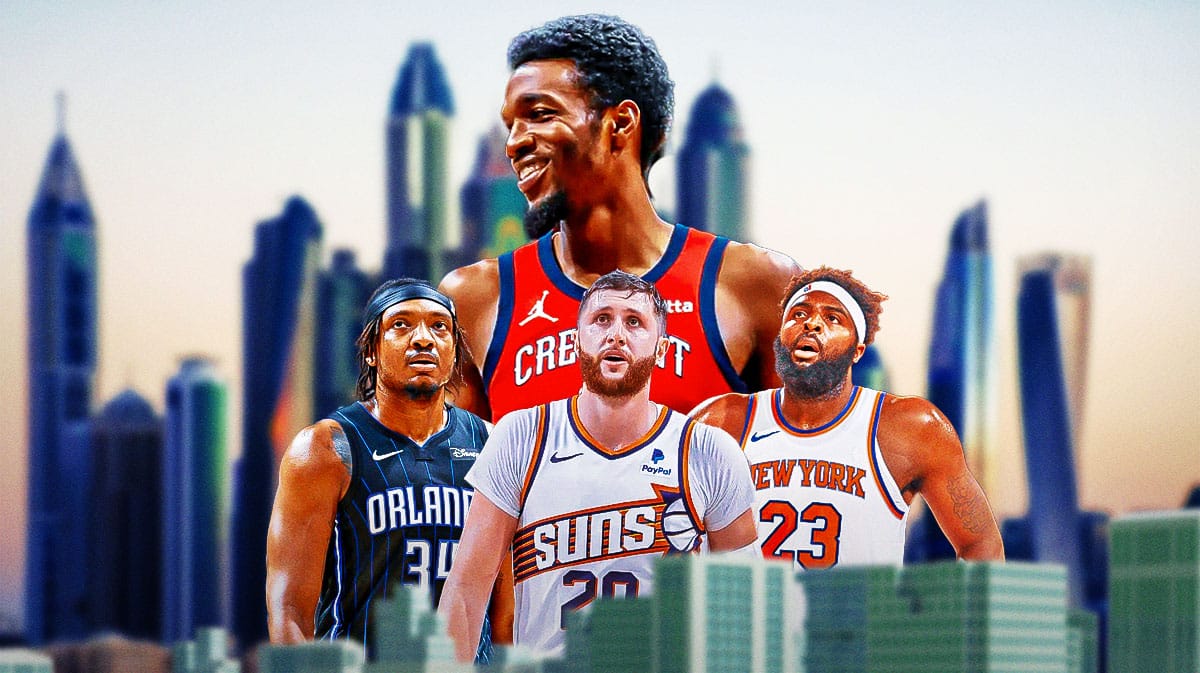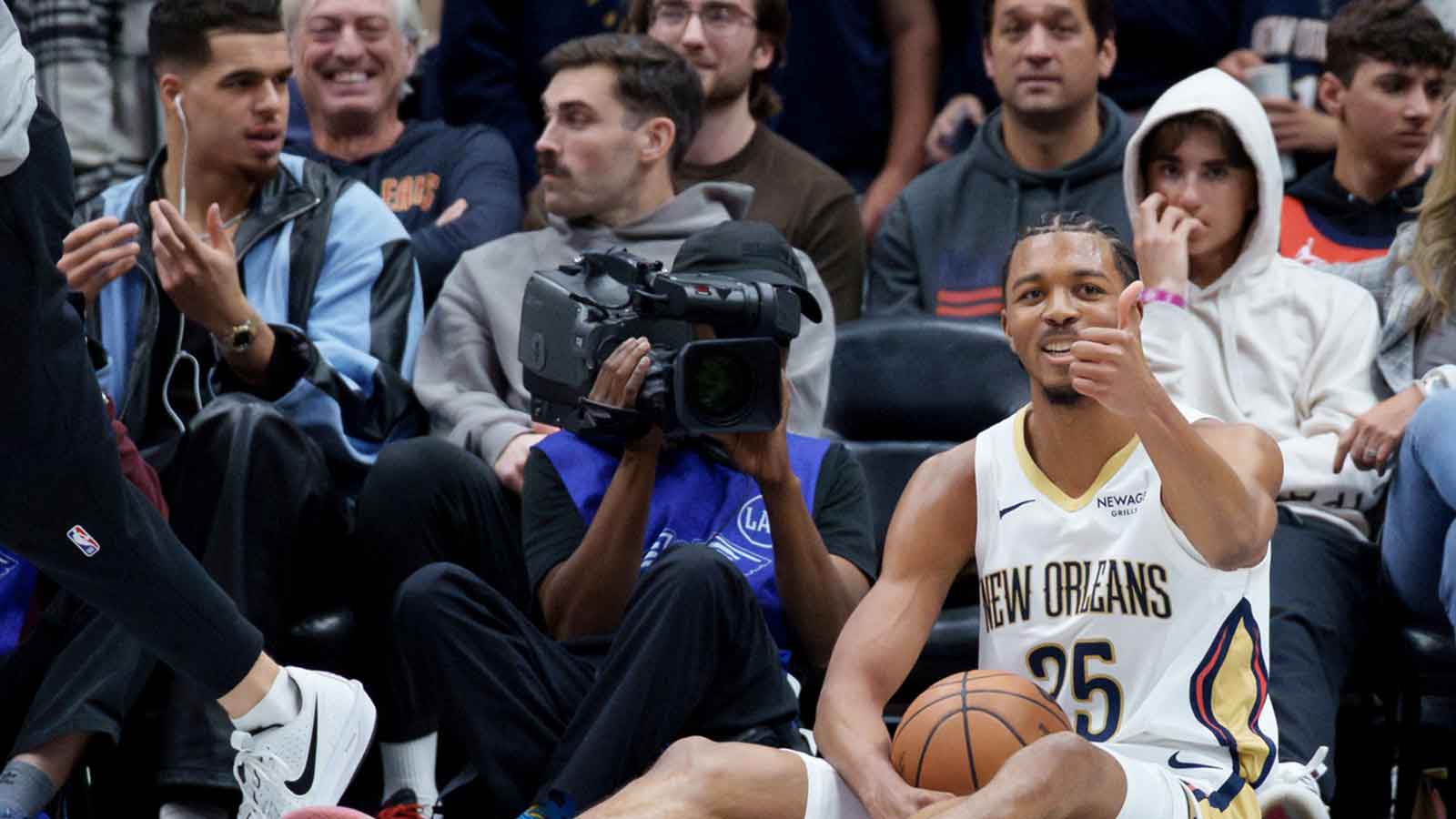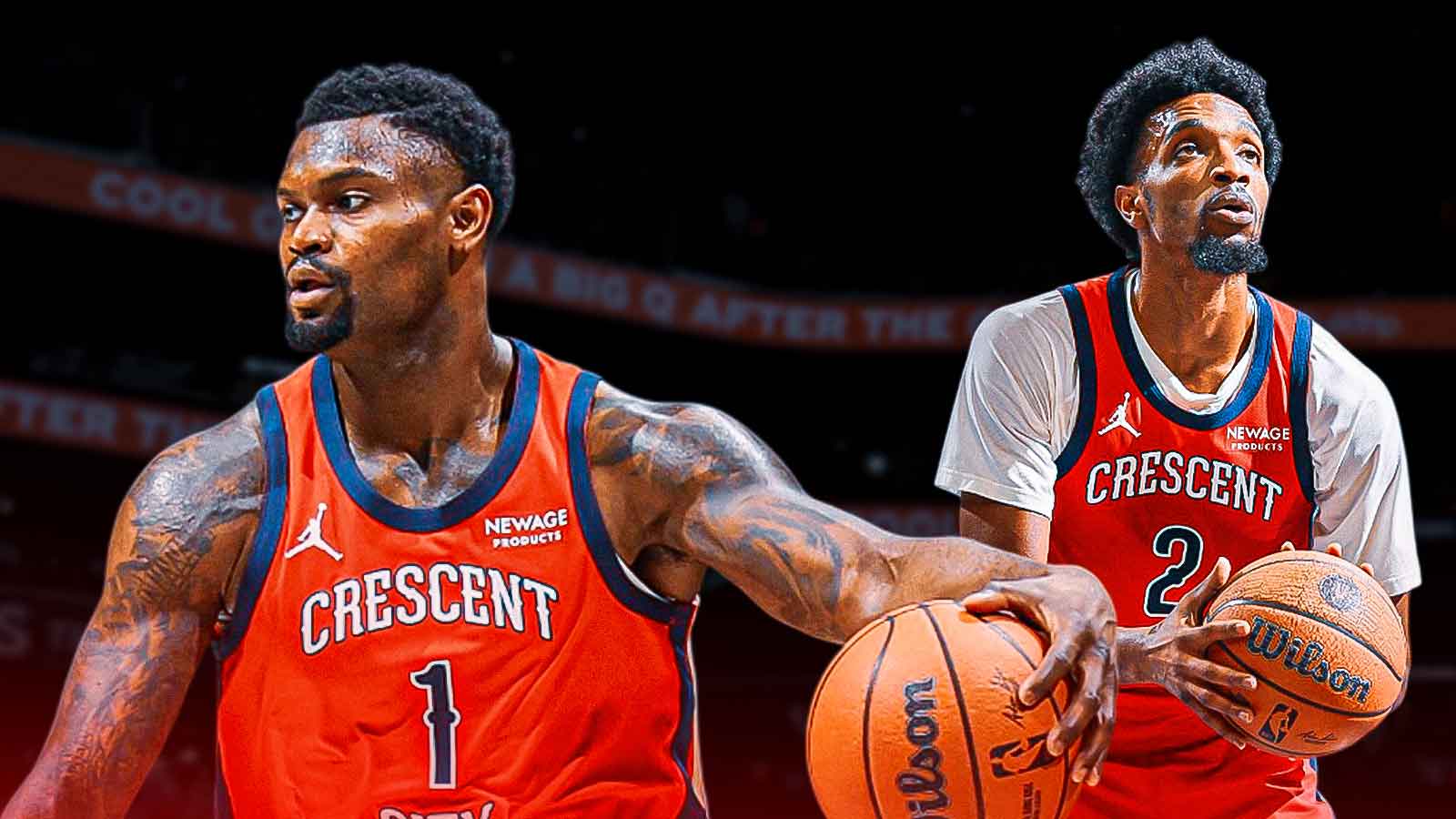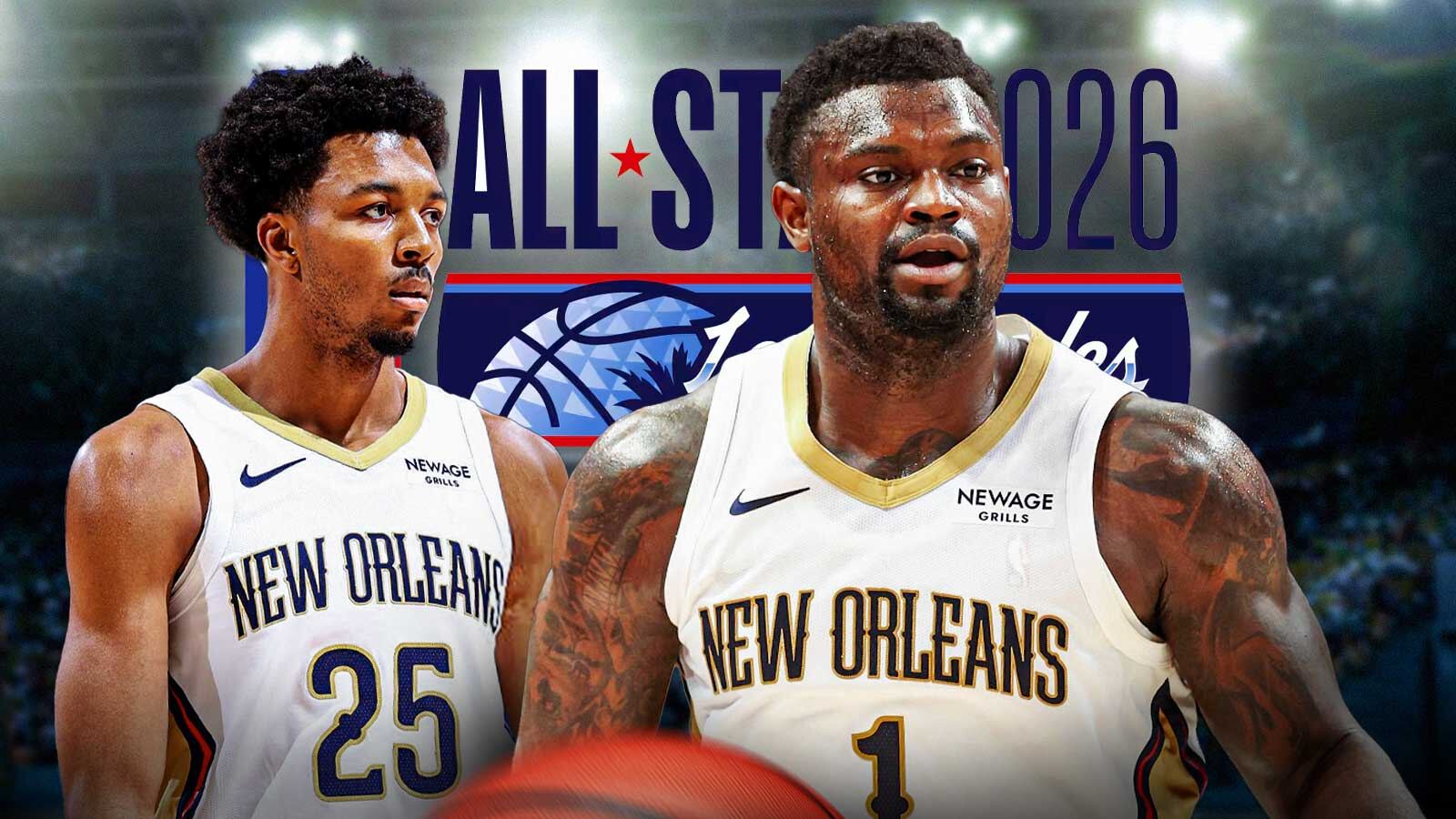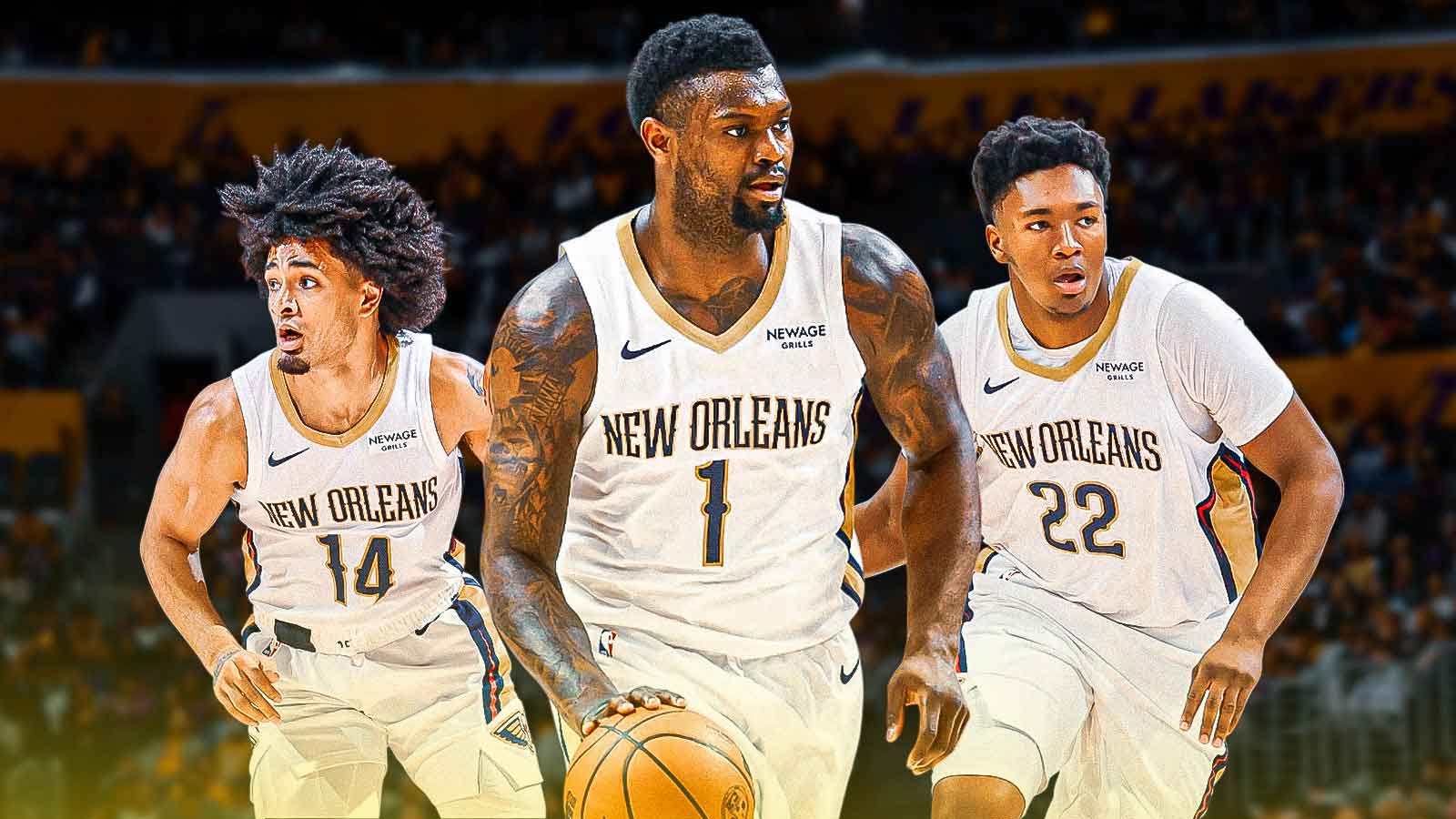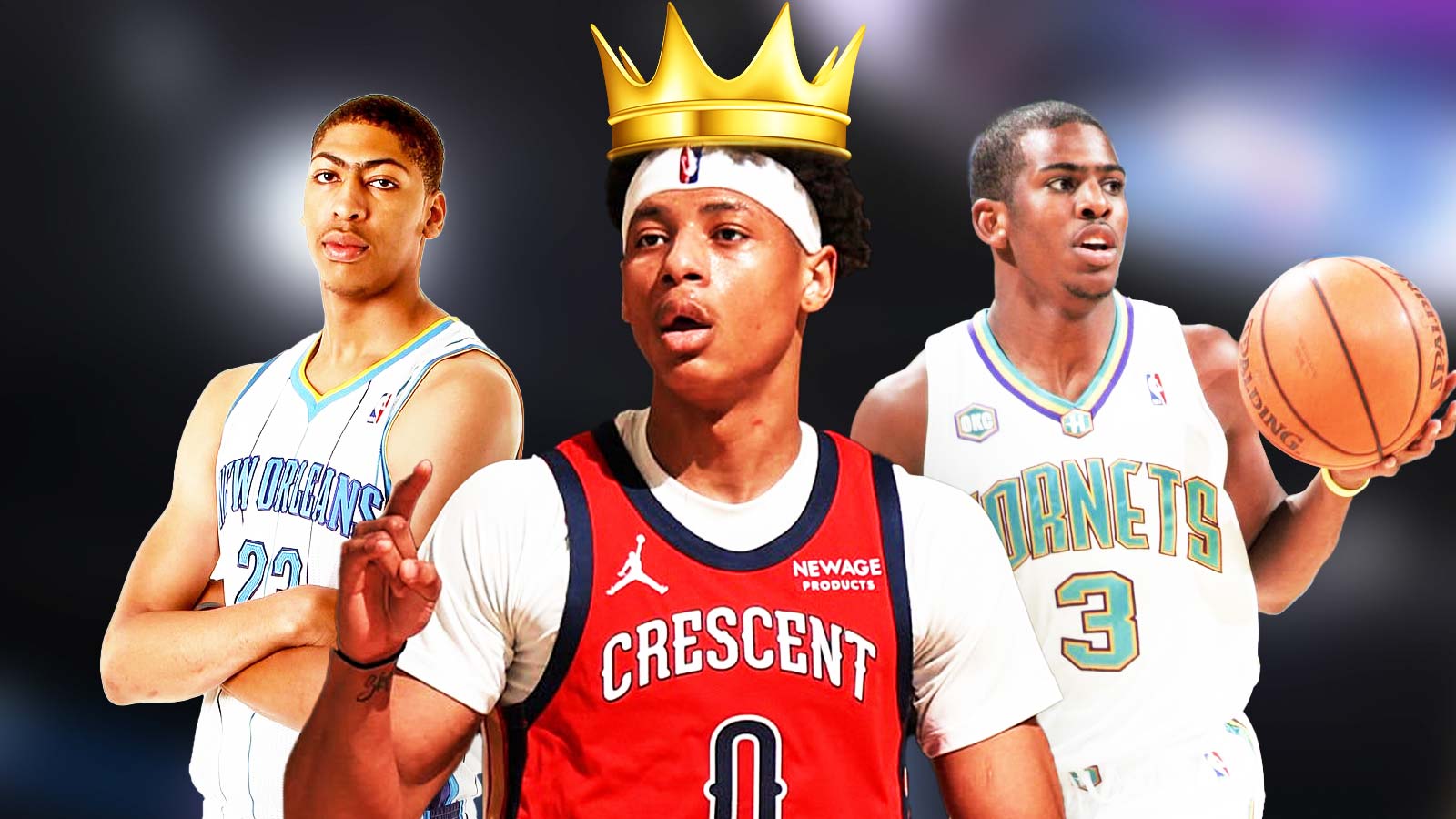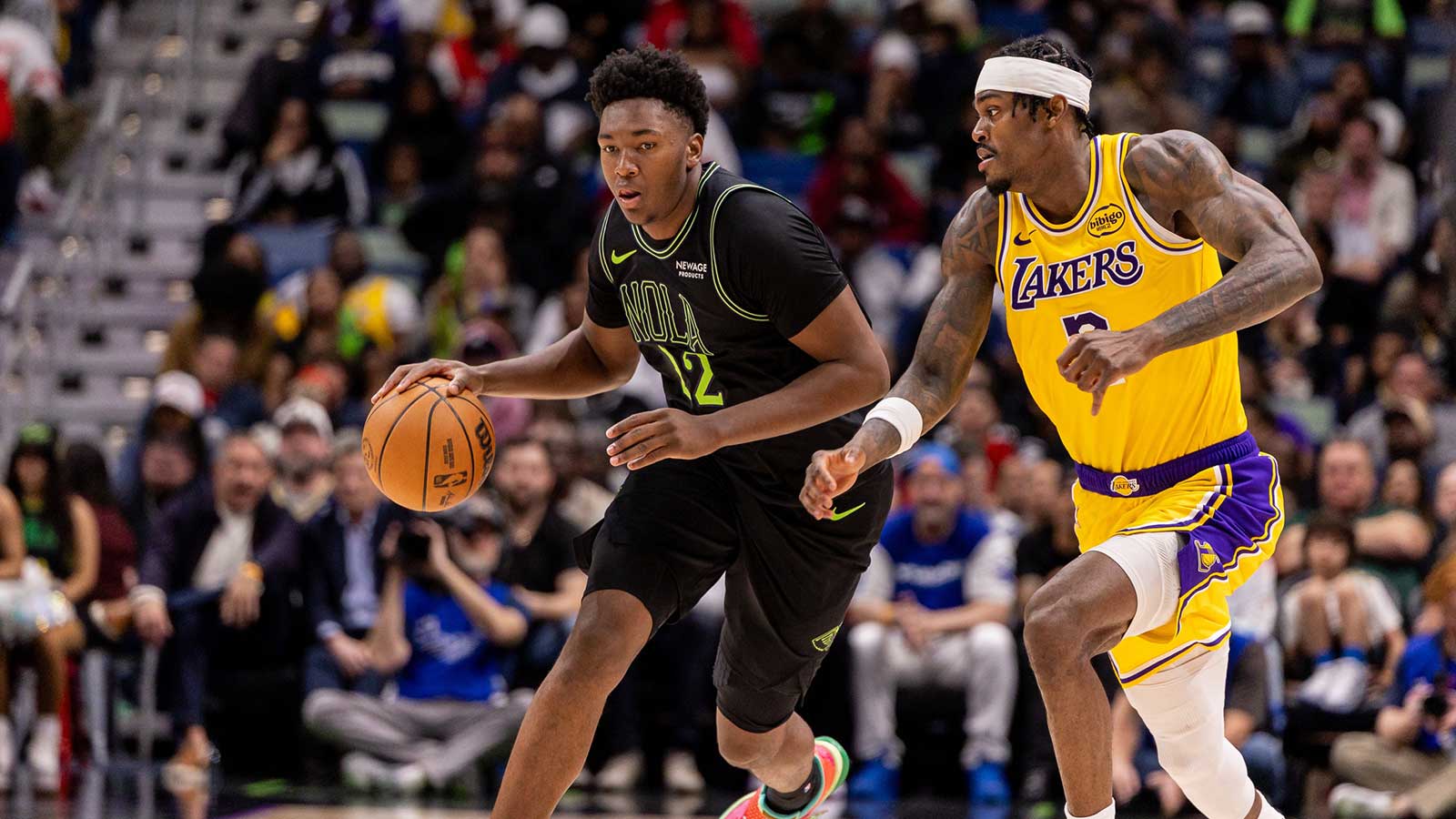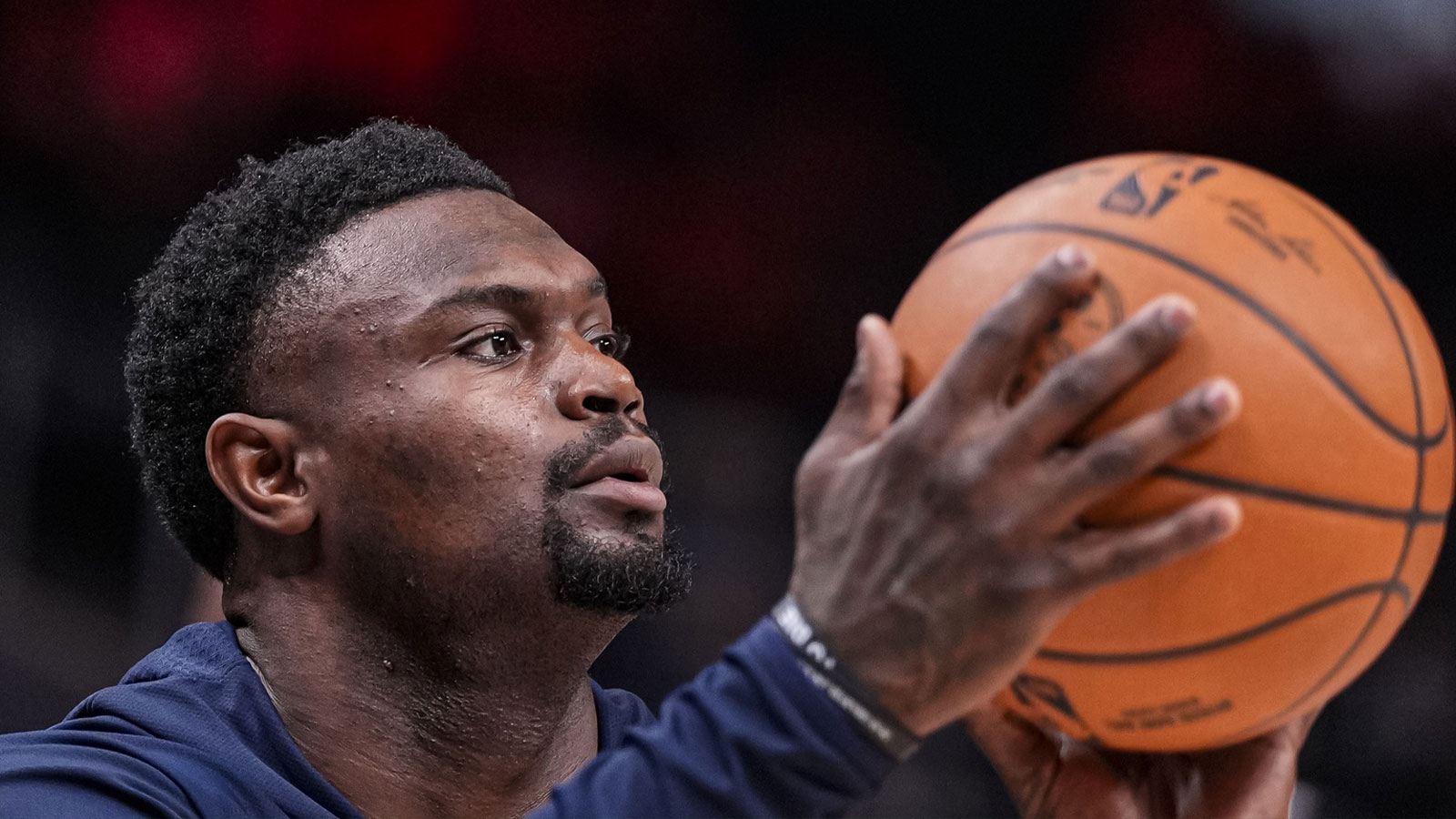The New Orleans Pelicans face a critical offseason decision regarding their frontcourt situation. Replacing the on-court production of Jonas Valanciunas, last season's starting center, has to be one of the top priorities. Valanciunas was a force in the paint, providing steady scoring, offense-facilitating passes, rebounding, and more rim protection than most perceive. However, the Pelicans have an opportunity to explore a different approach – one involving Herb Jones, a rising star who finally made an All-Defense breakthrough.
The Pelicans need 48 solid minutes from the center position. Zion Williamson has gotten some run in the role under three different head coaches while in New Orleans. Count him in for 10 minutes next to a stretch four like Trey Murphy III, Larry Nance Jr., or Karlo Matkovic. Jones, a First-time NBA All-Defense First-Teamer, can help fill the rest of those minutes at the five.
Jones can score, pass, rebound, and patrol the paint on defense when teams go small. The Pelicans first deployed the tactic last March. Valanciunas, Zion Williamson, and Larry Nance Jr. were all on the injury report then but Wille Green has leaned on that look a few times over the year since. But how long can Jones jostle on the low block against traditional lineups? New Orleans needs to find out given what the world has seen during the NBA Playoffs. Individually, the switch might also help Jones in the Defensive Player of the Year conversations.
Valanciunas is irreplaceable in the locker room. The consummate pro was credited all season for his approach to being available for every game despite a dwindling role in Green's rotations. Still, more than a few big men who help carry a team during the regular season have been played off the court during the postseason.
Replacing Pelicans' point-of-attack ace
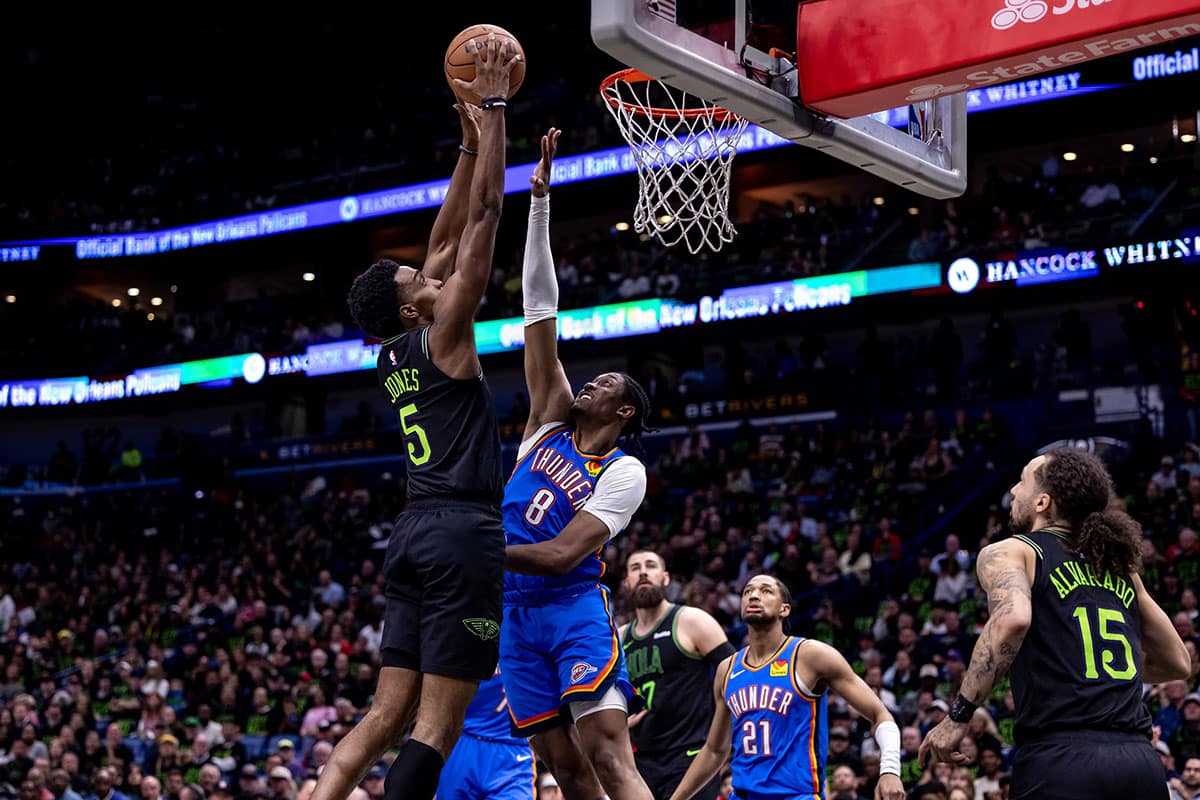
Jones was the only perimeter-based player named on the NBA's First-Team All-Defense list. ‘Not on Herb' has been the mantra over the first three seasons. The fourth year might be more about teammates telling their assignments to ‘Just Head to Jones' much like jailers leading someone to a lockdown bunk.
Rivals will not be able to isolate Jones as much matchup-hunting and switching. They'll also have to think more about the second line of defense when playing the Pelicans. The problem is replacing the first.
The Pelicans can use Jones at the five in spurts to mitigate the lack of a traditional big man. Longer stretches in the role are not only asking more of Jones but also the teammates stepping up on the perimeter. New Orleans will need someone like Dyson Daniels to step up as a point-of-attack defender during those minutes. Murphy III has been making substantial developmental steps on that end of the court as well.
Jose Alvarado is a known pest that helps spark the bench units but lacks the size to help Jones much in these situations. Bringing back Naji Marshall would help, but will likely prove too expensive. Daniels and Jordan Hawkins need the minutes that Marshall would demand. Perhaps the best route to solving the problem of moving Jones off of the perimeter is chasing a guard like De'Aaron Fox or Mikal Bridges.
Herb Jones: Revolutionary defensive dynamo
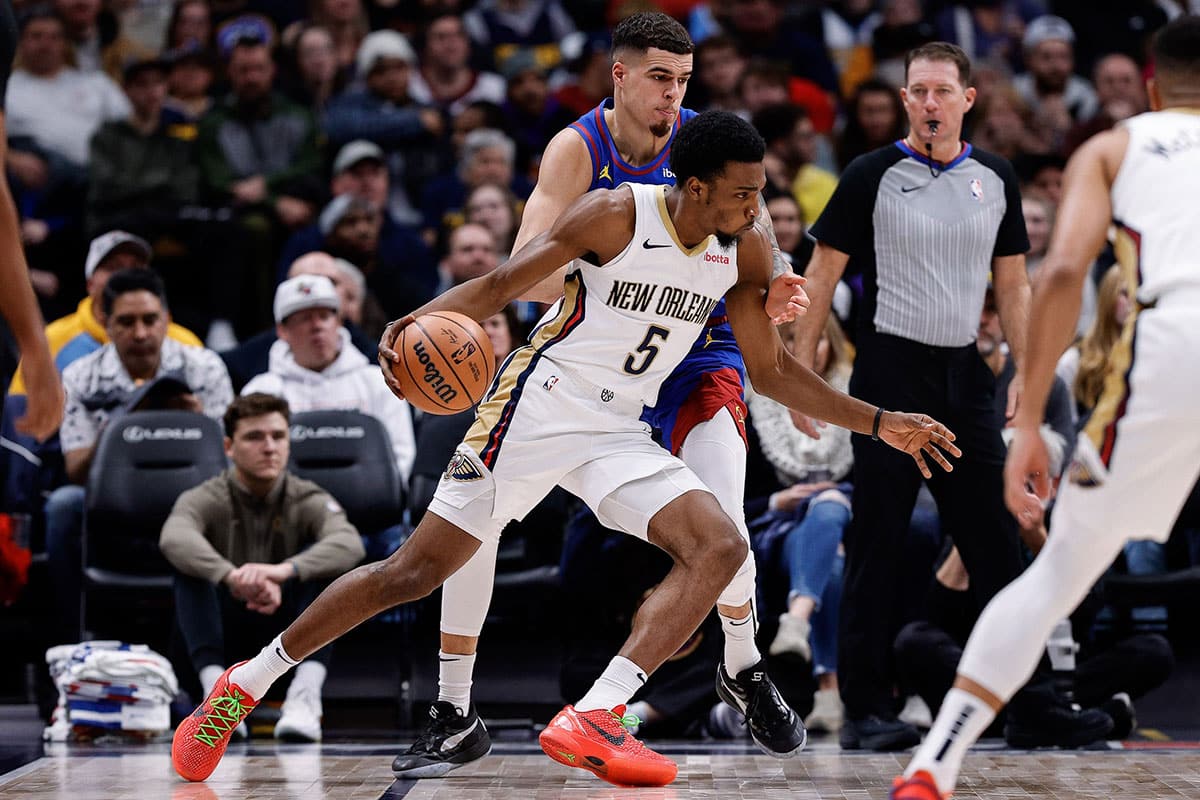
Jones, known for his defensive prowess, has the potential to redefine the center position ala Draymond Green with the Golden State Warriors. The ‘Death Lineup' was the foundation for a dynasty, supporting Steph Curry's assault on the three-point records and pursuit of championship rings. Simply put, Jones checks all of the boxes that will help teams succeed in the pace-and-space era.
Big men have to be able to switch. The old basic coverages against Luka Doncic or Shai Alexander-Walker are now dinosaurs relatively speaking. When it comes to switchability, Jones can obviously guard multiple positions. The 25-year-old can guard every position. His lateral quickness and instincts allow him to switch onto guards and wings effectively. In today's NBA, where pick-and-roll actions are prevalent, having a center who can switch seamlessly is invaluable.
There is no point in having a big man who gets switched away from the rim, however. Rim protection has to be a priority. Shot blocking stats do not always paint a complete picture though. While not as physically imposing as Valanciunas, Jones compensates with timing and anticipation. His shot-blocking ability can disrupt drives and discourage some shots at the rim. Jones is also elite at recovering from the paint to block a three-point attempt.
Jones may lack the standing height and brute strength of Valanciunas. Still, the former second-round pick's tenacity on the boards is undeniable. Jones has the hustle and positional awareness that cannot be taught according to Green, and those traits lead to second-chance opportunities for the Pelicans. Rebounding should not be a problem when Jones plays the small ball five role assuming the other four players help.
Small challenges to big changes
Of course, there are a few challenges to this scheme. Opponents will learn to attack the Pelicans given enough tape to scout. Jones is undersized for a traditional center. He'll face bulkier opponents in the paint. Jones is still developing and can learn the nuances. His defensive versatility compensates for this limitation. Green's job is to find a way to make this work in the right moments without sacrificing too much on either end of the court.
Jones has shown glimpses of playmaking ability. As a center, he can facilitate ball movement, initiate fast breaks, bring the ball up in a hurry in a solo fashion ala Josh Hart, and create open looks for teammates. His passing vision could unlock new dimensions for the Pelicans' offense.
New Orleans should have better floor spacing in these minutes as a side effect. Valanciunas could step out to the three-point line but operated primarily with one foot in the paint. Jones, with his improved three-point shooting, can stretch the floor. His presence beyond the arc forces opposing centers to step out, creating driving lanes or throwing up lobs for Zion Williamson.
The Pelicans should seriously consider Herb Jones as their closing center in most situations. His defensive impact, offensive versatility, and potential to add more strength suggest he could hold up in the role. While he won't replicate Valanciunas' style, he offers a fresh approach—one that aligns with the modern NBA.
The Alabama product has passed all of the eye tests. He averaged 11 points, 3.6 rebounds, 2.6 assists, and 1.4 steals per game in the 2023-24 season. Jones hit 49.8% of his shots from the field, sporting a 41.8% three-point mark and 86.7% free throw success rate.
If Jones continues to develop, he will be one of the biggest contributors to the team's success next season. Having this option in the mix should help in trade negotiations as well. No team with Jones is going to feel desperate to make any kind of defensive play. That alone will help when it comes to replacing Valanciunas.

